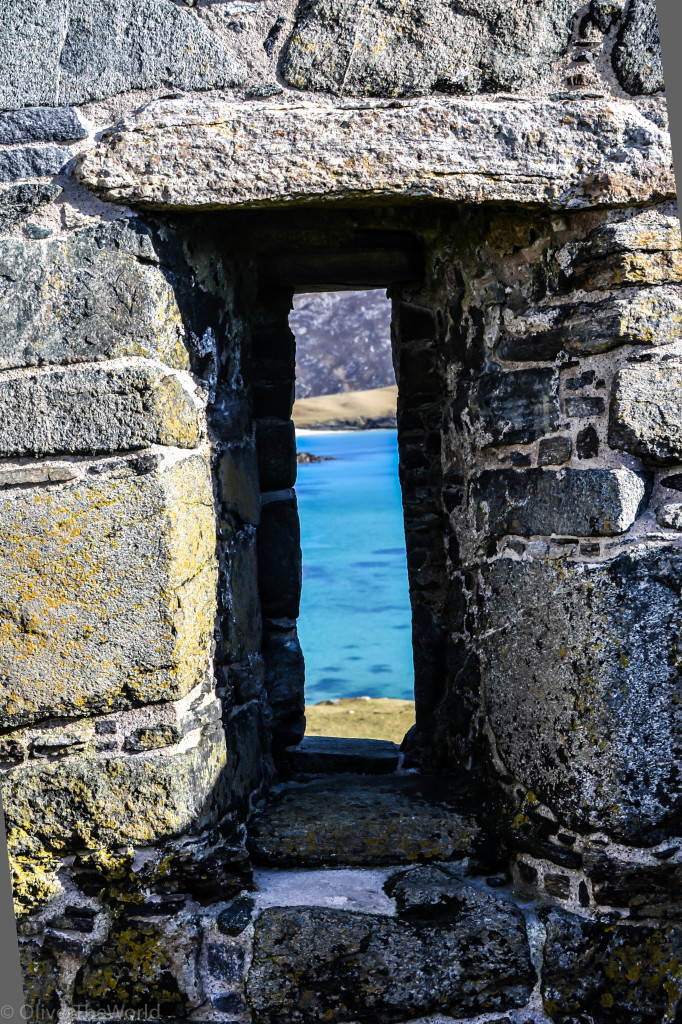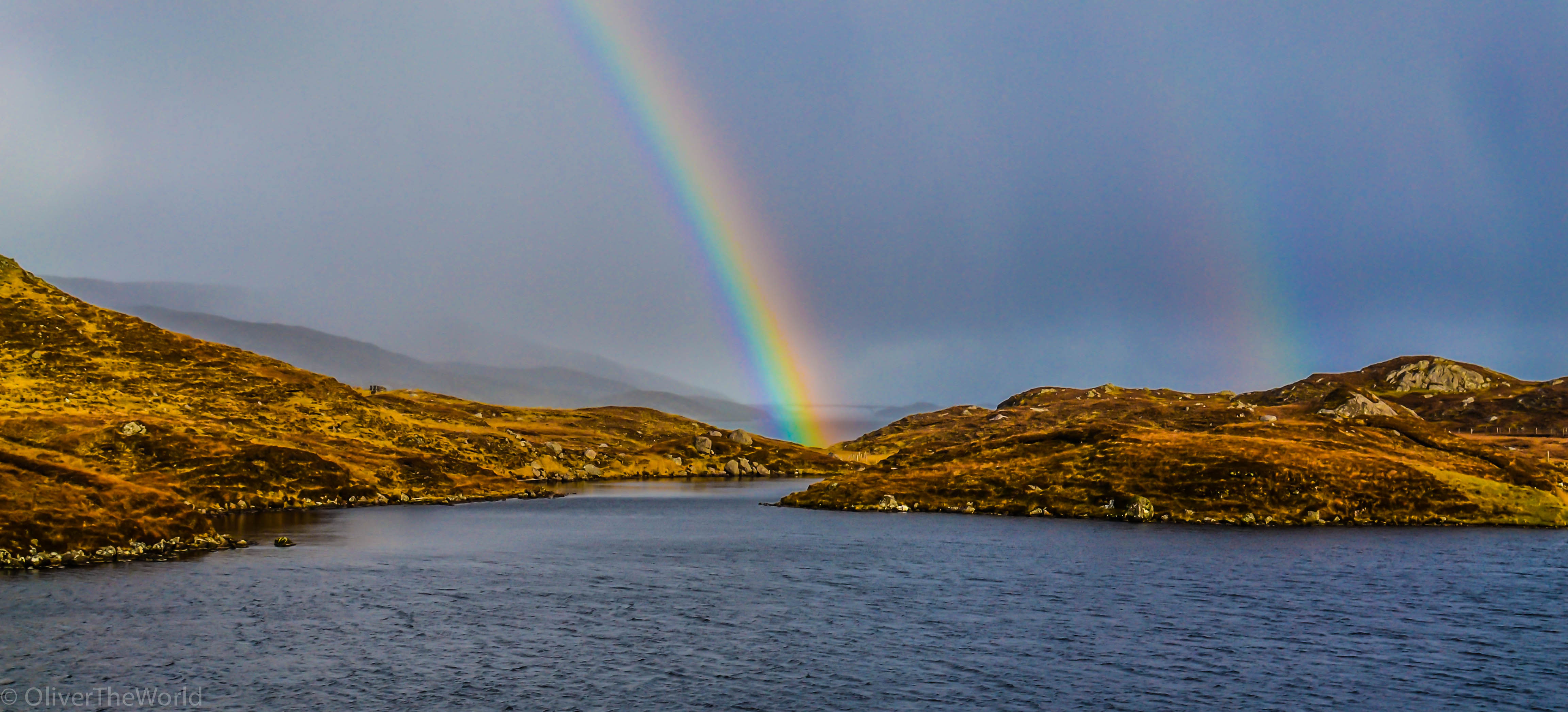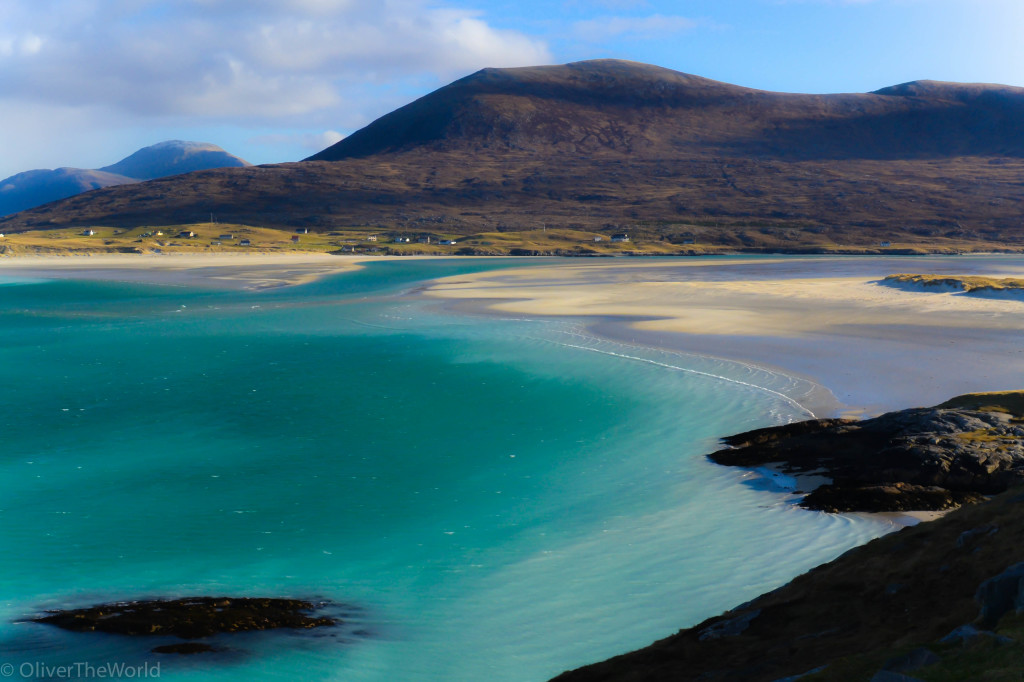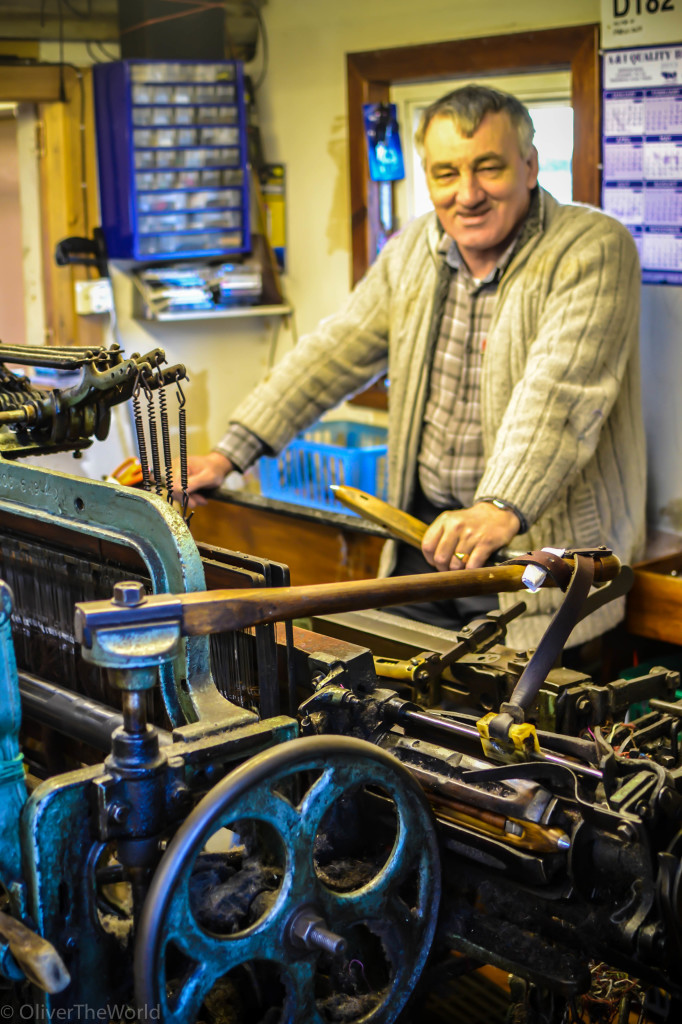March 9 – 16
Isle of Harris, Outer Hebrides Scotland
“You’ll get off the boat in Lewis and you’ll say to yourself…wow, now that’s really something”. Clustered around their dinner table, our friend Davy’s eyes grew wide and round as he illustrated his point. Nodding her agreement, his wife Cheryl chimed in.
“Then you’ll get to the Isle of Harris and….”
Ryan and I leaned in a little closer, caught our breaths. Davy’s eyes closed momentarily and then suddenly flew open as he threw his hands up over his head, jumped up from the table and shouted.
“WOWWOWWWWWWWW!” Their cat, Inga, who had been patrolling the area for a handout, jumped nearly three feet straight in the air. Ryan and I lurched back in our seats.
It is precisely in this manner and environment in which we always seem to unearth the greatest destinations that we are so fortunate to come across in the course of our travels. It happens always in the company of good friends who incidentally, are locals. With eyes flashing, they whisper (or bellow) the names of these places as if they were sacred words. A prolonged silence nearly always follows.
“It’s that incredible, is it?” Ryan was calculating the driving mileage in his head, but I was ready to make the decision of where we would be off to next right there on the spot.
This was how we found ourselves, one week later, arriving at the village of Uig on the western corner of the Trotternish Peninsula, Isle of Skye, waiting to board the CalMac ferry that would cross the Hebridean Minch to the Isle of Harris in the Outer Hebrides. That was the plan; only it didn’t exactly play out that way.
The afternoon of our departure was a blustery one on Skye. Our little cottage on the Waternish had rattled all night in the wind, but we just assumed business as usual for a ferry service plying these far northern waters. We were shocked then to learn that our ferry had been postponed till very early the following morning, and, as a concession, we were granted IOUs for an evening meal. On the matter of procuring emergency accommodation so late in the day, we were left to fend for ourselves. I was practically blinded by the Calvinist fire in the ferry terminal attendant’s eyes as she matter-of-factly deadpanned, “tis an act of God, my dear” while I glared at her from across her desk.
We somehow managed with the help of a sympathetic local inn-keeper, who, when he heard our story, marveled at our gumption, but quickly pointed out that long-term travel with two children under the age of 6 years wouldn’t exactly be considered his cup of tea. At that particular moment, with the prospect of taking two kids down for a supper of reheated scraps at the little longshoreman’s pub on the wharf, followed by five hours of sleep prior to boarding a ferry in the frozen pre-dawn darkness, I was finding it difficult to disagree with him.
The following morning, semi-conscious and quivering under the weight of of four cups of coffee apiece, we finally steered into Tarbert, the port town situated on the isthmus connecting Lewis and Harris, which are the two disparate parts of essentially one island. Early morning sunlight of the like we had not seen in weeks back on mainland Scotland streamed into our van as we climbed up the road leading up over Harris’ escarpment to the western side of the island. Innumerous navy-blue lochans, many no larger than a swimming pool, were scattered throughout a lunar landscape of Lewisian gneiss, some of the oldest exposed rock in the world. This strange countryside had served as the backdrop for the scene that took place on the surface of Jupiter in Stanley Kubrick’s 2001: A Space Odyssey, and it was easy to see why. But then, amid all that rock, there they were, swirling westward and melting into a dozen shades of blue. The beaches.
By design, neither Ryan nor I consider ourselves top-drawer folks. Certainly when it comes to matters such as where we choose to lay our heads at night or the way in which we arrive at our intended destinations, we are happy to entertain any and all comers. But in the matters of a beach, we hold fast to a certain standard. In Western Australia, we once ventured 1,000 miles across a wasteland of abandoned iron mines to reach a nirvana of white sand at Cape LeGrande. In Thailand, it took us two weeks to discover the palm-fringed sliver of solitude at Koh Kradan. My favorite beach in the Caribbean happens to be one on the island of Vieques that only very recently opened to the public when the American military base packed up and moved on, leaving behind a sanctuary accessed solely via a 45 year-old jeep track through a jungle. For the right beach, we will always go the distance.
And here we were. The white arcs around Nisabost, Seilabost, Borve, Horgabost, Scarista and Luskentyre were studded with bleached limpet and little neck shells; the same that would eventually succumb to the forces of the sea and time to become the fine white grains that blinded us that early morning of our arrival. For seven days we strode up and down dunes that wild Atlantic winds and currents had pushed high above the strand; had carved great sand valleys and drawn long spits out into the sea. The dunes had been colonized by plants seen nowhere else in Scotland, were great sand pastures that, one day, with the coming of spring, would leap alive with the brightness of wild flowers. Every second of those precious days was spent gazing out from the machair, those grassed-over dunes, where we watched the tide pull in across the sands and release.
It was in the machair that we came upon Tony and Isla, the Highland and Eriskay ponies that belonged to the beautiful daughter of the couple from whom we hired our cottage on Luskentyre. I learned that Toby, fourteen hands, barrel-chested and whiter than the driven snow, was descended from the Queen’s own private stock and possessed the perfect temperament for long hacks on the beach, which our gracious hosts so kindly obliged me. Isla, barely more than a foal at her two years and yet unbroken, was content to chase us through the dunes, a dapple-gray shadow to our longer stride that whinnied after her companion as the sun dipped behind the offshore island of Taransay. In the evenings after a ride, both Oliver and Kendley clambered up from the freshwater burn where Ryan had watched them attempt to snare minnows with little nets, and shared in the task of grooming Toby’s flowing mane, tail and feathery fetlocks. Before the day was over, we were all flocked in the long, white hairs that the horse was gradually giving up for the season.
Some days we walked to what we perceived were the ends of the earth, and indeed the word Hebrides traces back to the ancient Norse “Havbrodoy”; ‘islands at the edge of the sea’.
 At the Rubh An Teampull site on the tiny Toe Head Peninsula, we found evidence of prehistoric settlements in the toppled stones of a mesolithic (4,100 BC) midden that was built over by a 15th century chapel. With just two gables remaining to frame the sea, the only callers on that particular day were a handful of black-faced sheep and our inquisitive children. The farm track on the return led us past scores of charmingly disheveled Highland cows and their new spring calves.
At the Rubh An Teampull site on the tiny Toe Head Peninsula, we found evidence of prehistoric settlements in the toppled stones of a mesolithic (4,100 BC) midden that was built over by a 15th century chapel. With just two gables remaining to frame the sea, the only callers on that particular day were a handful of black-faced sheep and our inquisitive children. The farm track on the return led us past scores of charmingly disheveled Highland cows and their new spring calves.
Another foray brought us to the modest home and workshop of Donald John Mackay, who, with his champion good looks and endlessly clacking Hattersley loom, wove masterpieces of Harris Tweed. We learned that it was the handful of folk like Donald John who clung to the old traditions that made life on Harris so uniquely resilient amid a modernizing world. But while Harris’ remoteness made for its charm, it was also its greatest curse. Families had been abandoning the Hebrides for more than a century to find work on the mainland or on foreign shores, and thus Harris’ young people had become its single-most precious resource.
In many ways we spent our short time on Harris exploring and learning, nearly always in the sunlight of the gradually lengthening days and sometimes under the cover of a light, chilly, horizontal rain. We committed every inch of its shoreline to our collective memory, we caught and held each angle of the light as it fell away to the west and intensified the turquoise and mineral greens that flowed beyond the tidal flats. We absorbed as much history of its people as we could and carefully observed their rituals and their ways.
It was some of the happiest days our travels had afforded us in the seven months since we had left California, and indeed, we pondered and even inquired about stopping right then and there to make a home beside the sea. For now, such a notion is committed to our dreams, or perhaps to a future spent in a quiet place. So much is wonderful and new in the course of an adventure such as ours, and even when it isn’t; when the journey is long and gritty and the sleep less than plentiful; the thread of a memory of a place like Harris endures.







Great story and photos. It really is a spectacular part of the world!
Love the blog, kind regards, Si
ps. We would love you to join TheDepartureboard’s Most Travelled Club, Click Link for details http://www.thedepartureboard.com/can-you-become-thedepartureboards-most-travelled-you-might-win-prizes
Hi Si! Thank you for the kind words! We’re looking forward to contributing to your site! Stay tuned!
I loved your blog post about Harris, it resonates with my fond memories of Harris.
I fell in love with the place as soon as I got there, I have been back 4 times in a year
PS: Here’s a wee video I did on Harris last year, mostly filmed during cloudy autumn days
https://vimeo.com/56711213
Oh my, that is a GORGEOUS video. Thank you so much for sharing it with us!!! Harris worked its magic on you, too, eh? I think we might just be the lucky few!